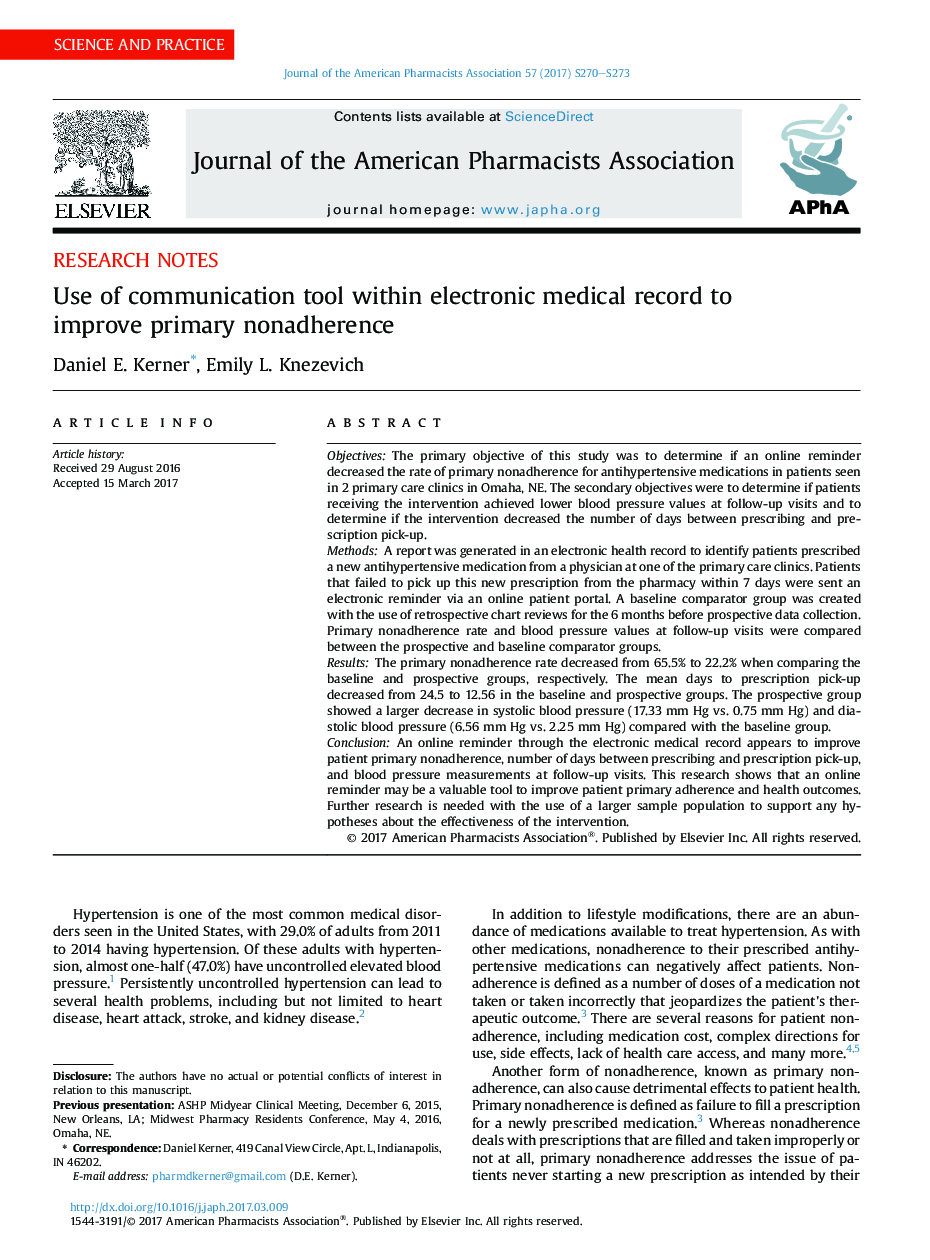| Article ID | Journal | Published Year | Pages | File Type |
|---|---|---|---|---|
| 5555876 | Journal of the American Pharmacists Association | 2017 | 6 Pages |
ObjectivesThe primary objective of this study was to determine if an online reminder decreased the rate of primary nonadherence for antihypertensive medications in patients seen in 2 primary care clinics in Omaha, NE. The secondary objectives were to determine if patients receiving the intervention achieved lower blood pressure values at follow-up visits and to determine if the intervention decreased the number of days between prescribing and prescription pick-up.MethodsA report was generated in an electronic health record to identify patients prescribed a new antihypertensive medication from a physician at one of the primary care clinics. Patients that failed to pick up this new prescription from the pharmacy within 7 days were sent an electronic reminder via an online patient portal. A baseline comparator group was created with the use of retrospective chart reviews for the 6 months before prospective data collection. Primary nonadherence rate and blood pressure values at follow-up visits were compared between the prospective and baseline comparator groups.ResultsThe primary nonadherence rate decreased from 65.5% to 22.2% when comparing the baseline and prospective groups, respectively. The mean days to prescription pick-up decreased from 24.5 to 12.56 in the baseline and prospective groups. The prospective group showed a larger decrease in systolic blood pressure (17.33 mm Hg vs. 0.75 mm Hg) and diastolic blood pressure (6.56 mm Hg vs. 2.25 mm Hg) compared with the baseline group.ConclusionAn online reminder through the electronic medical record appears to improve patient primary nonadherence, number of days between prescribing and prescription pick-up, and blood pressure measurements at follow-up visits. This research shows that an online reminder may be a valuable tool to improve patient primary adherence and health outcomes. Further research is needed with the use of a larger sample population to support any hypotheses about the effectiveness of the intervention.
